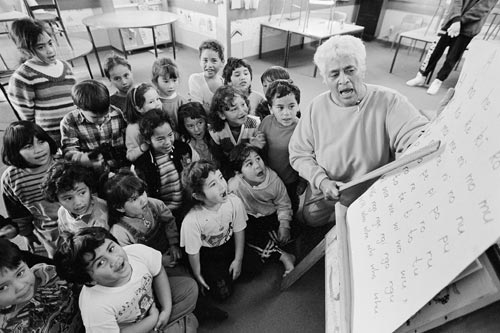
In the 1970s a decline in the number of people speaking the Māori language coincided with the rise of educated and determined young Māori professionals. They pushed for resources and systems to revive the language. Bilingual units, in which Māori is taught through full immersion, were developed in several schools. Here Nan Bella, teaching assistant at the bilingual unit in Waiwhetū School, Lower Hutt, teaches pronunciation in 1991. Bella grew up in Ruatōria on the East Coast, spoke only Māori at home, and did not fully learn to speak English until she was 21.
Te whakamahi i tēnei tūemi
Alexander Turnbull Library, Dominion Post Collection (PAColl-7327)
Reference:
EP/1991/2155/3-F
Photograph by Mark Coote
Permission of the Alexander Turnbull Library, National Library of New Zealand, Te Puna Mātauranga o Aotearoa, must be obtained before any re-use of this image.









Tāpiritia te tākupu hou